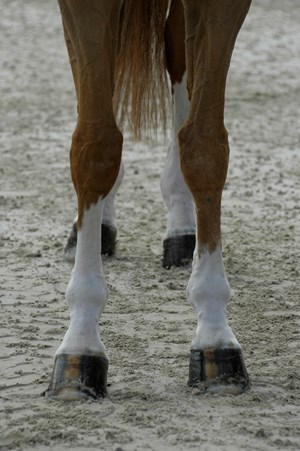Question: My horse Bridget, a former jumper, was 18 years old when I bought her. Within two months, I learned she had stringhalt. I gradually put her back into work and was successful in doing Introductory Level dressage before she again became lame. I had her hocks injected and later elected to have surgery performed, but the problem returned. Can you tell me more about stringhalt?

Answer: Stringhalt is a rare lameness that causes a horse to lift his hind legs higher and more rapidly than usual when he’s moving. One or both hind legs may be affected, and the lameness varies from mild (just a muscle spasm) to so severe that the horse actually kicks himself in the belly when he tries to move. Conditions that make any horse’s gaits more animated, such as cold weather and competing, can exacerbate the signs. There does not seem to be pain involved with the lameness, yet it is difficult to ride a horse that cannot control the actions of his hind legs.
Veterinarians don’t know what causes most cases of stringhalt. We do know that the nerve controlling the lateral digital extensor muscle probably is damaged. This muscle lies on the outside of the hind leg, just above the hock, so a kick to this area is the most likely culprit. For horses with bilateral stringhalt–both hind legs are affected–a more central location of nerve damage, either in the spinal cord or brain, is likely.
Treatment is surgical and involves removing a portion of the lateral digital extensor muscle and tendon to restore a more normal gait. Without the action of the lateral digital extensor muscle, the hind leg cannot be brought forward with as much force.
I suspect that in your mare’s case, the primary lesion was in the spinal cord because her stringhalt was bilateral and she had no other behavior that would suggest a brain lesion. That also would explain why surgery brought only temporary relief. I could speculate that she had trauma to her spine from her former jumping career that predisposed her to arthritis in her spine and nerve damage to her back legs that happened to develop after you purchased her. The dressage work probably kept her flexible enough until the nerve damage became too severe for her to be ridden.
Carolyn R. Simmelink, DVM, has been in private equine practice since 1981. Her specialty is educating new owners who are eager to provide their horses with the best of care. She has competed in horse trials at Training Level and in dressage shows at Second Level. Both of her daughters are involved in Pony Club.
This article first appeared in Dressage Today magazine.











